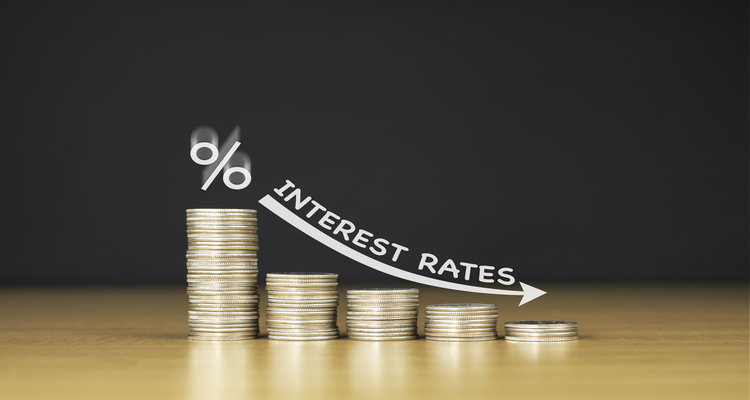Compared to regular loans, payday loans are typically repaid over substantially shorter periods of time, and the interest is repeatedly compounded to make the product sound “annual.”
As a result, payday loans have one of the highest APR rates that, often exceed 400% or even more.
Here’s more on what you need to know about APR and why APR for payday loans is so high.
What is APR?
APR is the most common and internationally recognized measure for comparing the prices of financial products around the world.
Personal loans, peer-to-peer loans, vehicle loans, mortgages, and credit cards are all compared using their APRs as a benchmark.
Many people confuse APR and interest rates when taking a loan. APR includes the interest rate of the loan as well as all other costs, such as the origination fee (if any), and any extra charges.
Payday loan providers must disclose the price of their services in the form of an annual percentage rate (APR), which should help customers understand and compare the borrowing costs across all financial products.
The APR for payday loans is high, due to many factors. Most prominent is the very short term, and high risk for default.
Is APR the same as the Cost of Funds?
No. APR and Cost of Funds are two very different terms that financial institutions use to profit from the payday loans they give. When a financial institution lends money, one of the most critical factors is the cost of funds, which refers to the price lenders should pay to receive the funds. Lenders will evaluate the cost of funds to determine their profitability before deciding whether or not to lend.
When lending money, a reduced cost of funds indicates a higher return. Therefore, the bulk of financial institutions will profit from the gap between the cost of funds and the APR paid by borrowers.
How to Calculate APR for Payday Loans?
APR, or annual percentage rate, is a term used to describe interest and fees of a credit product over a year.
Let’s look at an example of how to compute APR.
Consider a $100 payday loan with a lending fee of $10.
This payday loan’s APR is
APR = ( Loan Fee x 36500 ) / ( Repayment Time x Loan Amount )
= (10 * 36500)/(14 * 100)
APR = 260.7142
The compounded interest (APR) for a $100 loan would be $260.71 over the course of a year. According to the 260.7% APR, borrowing $100 will cost you $260.71 over a period of a year.
APR increases as we decrease the Repayment Time according to the formula. Hence we see very high APRs in Payday Loans. Here’s another example from the Consumer Finance Bureau.
The average APR for payday loans is 400%, but many states capped the interest rates on payday loans.
What is the Average APR for Payday Loans?
Although the actual amount varies between lenders, payday loans are well-known for charging some of the highest APR rates. The average APR is around 400% (between $15 and $30 for each $100 borrowed).
Comparatively, the APR for credit cards usually ranges from 12% to 30%.
Why is the APR for Payday Loans so High?
Payday loans’ high cost is a direct consequence of their fundamental qualities. Regardless of the fact that payday loans are expensive in and of themselves, there are a few more reasons why the APR of payday loans is so high:
Unsecured loans
There is no collateral or guarantor required for payday loans. Lenders do not have any financial assets to confiscate. They cannot transfer the debt because there are no underwriters available.
In the face of potential defaulting borrowers, lenders are essentially helpless and exposed. The high-interest rates balance the risks, which also assist in defraying any losses.
Unstable Financial History
The average borrower of a payday loan has a bad credit history, making it impossible for them to prove their dependability in terms of past payments.
Payday loans represent one of the few options open to those with poor credit, as the bulk of financial institutions won’t lend to this kind of borrower. Lenders who offer bad credit loans are forced to protect themselves by requesting a higher APR.
High Operating Costs
Payday lending is a high-volume industry. Payday lenders need a lot of payday loans to turn a profit. Maintaining a debt has a set cost.
The total operational cost rises when there are more loans. Because there are more small loans, the costs of running payday loans are increasing.
High Default Rate
Payday loan borrowers rarely make payments on time; only 14% do so. According to the CFPB, 20% of borrowers default on a loan at some point.
Despite the grim statistics, payday lenders need incentives to give loans. Because of the high-interest rates, lenders are kept afloat and out of bankruptcy.
APR includes fees, that are charged for lender expenses
Any fees that the lender deems appropriate may be assessed, and this fee will be reflected in the final APR. This means that a customer may be charged for a portion of lender expenses, such as store overhead, employee costs, and fees associated with conducting credit checks.
Is there a Maximum APR for Payday Loans?
As shown in how to calculate the APR for your payday loan, APRs on loans with shorter terms tend to be higher. Short-term loans (1 week to 2 weeks) can have an APR ranging from 390 to 780%.
Although many US states have APR ceilings in place, Native American lenders and states with no restrictions may still charge insanely high rates.

